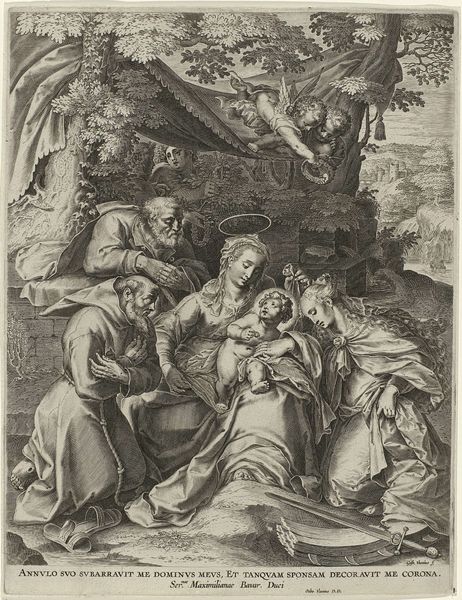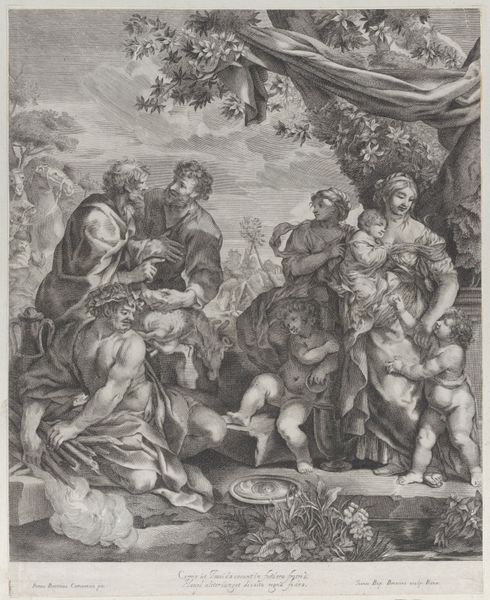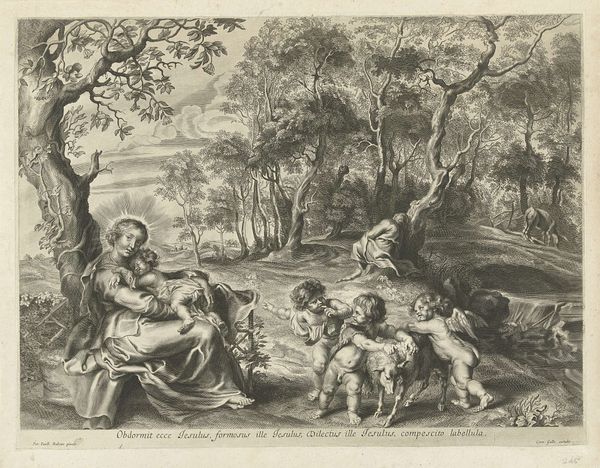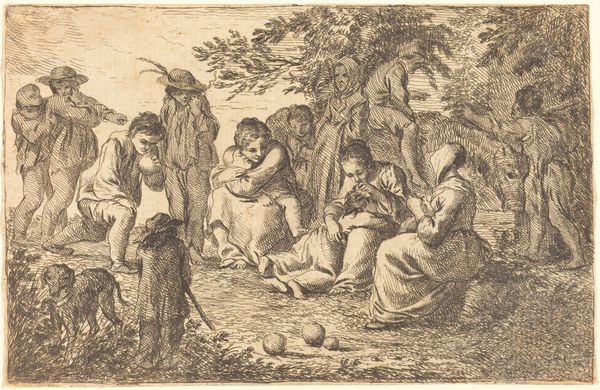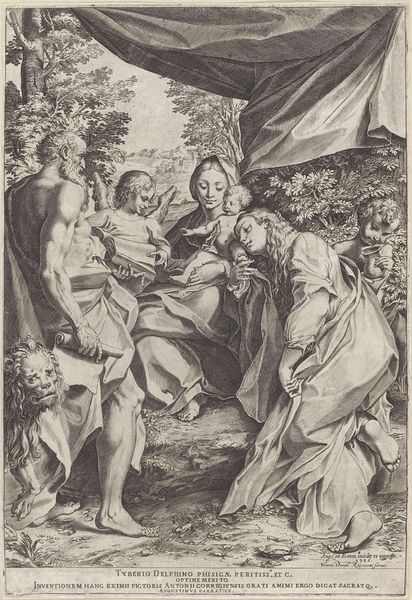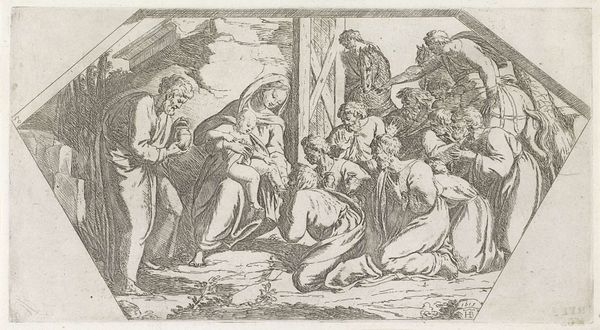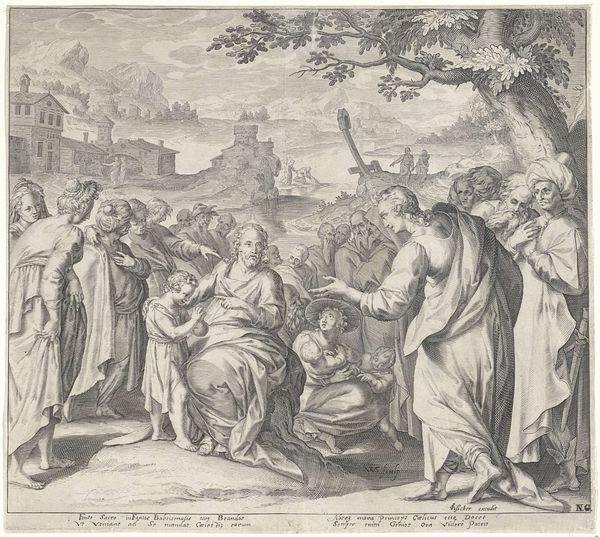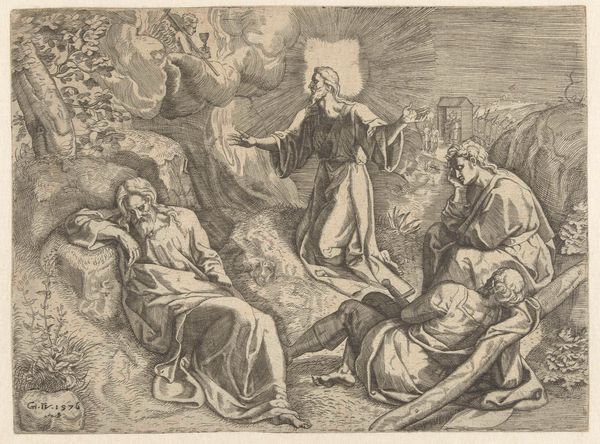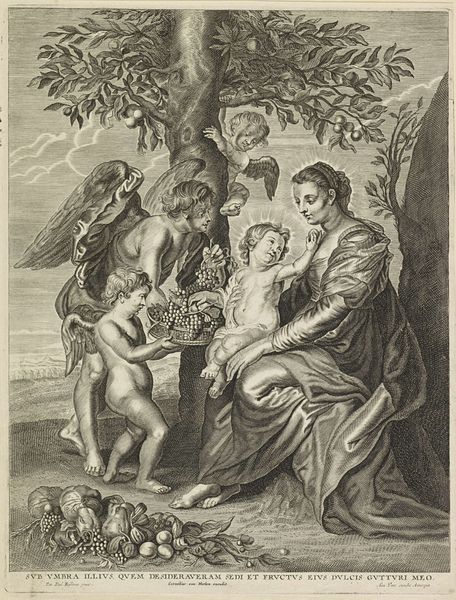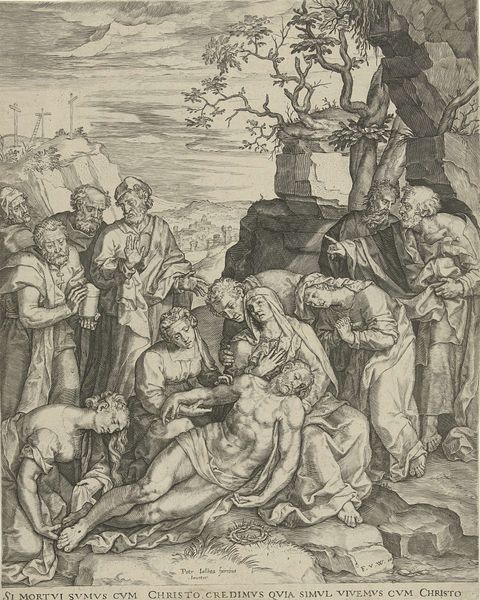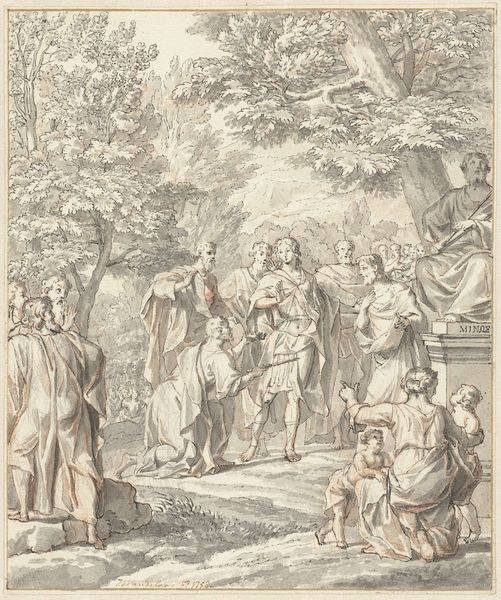
print, engraving
#
narrative-art
#
baroque
# print
#
landscape
#
figuration
#
history-painting
#
engraving
Dimensions: height 175 mm, width 235 mm
Copyright: Rijks Museum: Open Domain
Curator: Paul van Somer II produced this engraving between 1670 and 1697, titled "Moses in the bulrushes," or "Mozes in het biezen mandje" as it is known here at the Rijksmuseum. It depicts a key scene from the Exodus story. Editor: Ah, yes. My initial reaction is pastoral peace, somewhat undermined by a tangible anxiety that the image holds back. Despite the sunny, idyllic rendering, a subtle current of worry flows underneath, right? Curator: Absolutely. Engravings like these from the Baroque period played a crucial role in disseminating biblical stories to a wider audience. The print medium itself—the process of etching, inking, and pressing—allowed for multiples, impacting religious and cultural life. Editor: It's almost paradoxical how this mass-producible medium portrays this uniquely intimate moment. The tenderness in the women’s expressions, juxtaposed with that underlying tension… How fascinating to see Van Somer’s workshop negotiate religious gravitas with widespread consumption! Curator: Exactly. Van Somer has flattened the affect; this adds a strange layer of disconnect to the presentation, I think. Moreover, let's think about who these images are catering to? They are purchased, owned, circulated... Editor: Okay, okay, so for that intended audience the engraving needed to appeal in a way that was comforting, accessible... It's lovely how the baby Moses becomes almost a decorative element within the larger design. Curator: Note also how he brings a very real approach to landscape drawing which may suggest that the narrative is brought into closer contact with a Northern European Protestant viewership that does not generally associate divinity and nature. Editor: You’re right! It definitely softens the blow, if there ever was one. A real comfort food, maybe? Curator: Perhaps. And that is, maybe, its strength. This tension between intimate suffering, private grief, a grand stage in history and mass production, makes "Mozes in het biezen mandje" much more profound. Editor: I like the layers of this, somehow more poignant because of the seeming plainness. A message that, with wider understanding of the material production, continues to echo.
Comments
No comments
Be the first to comment and join the conversation on the ultimate creative platform.

